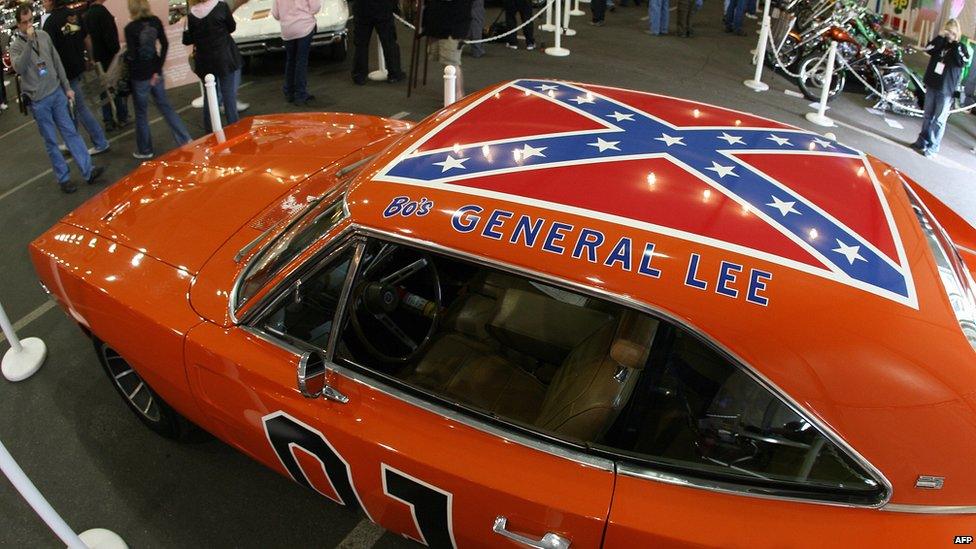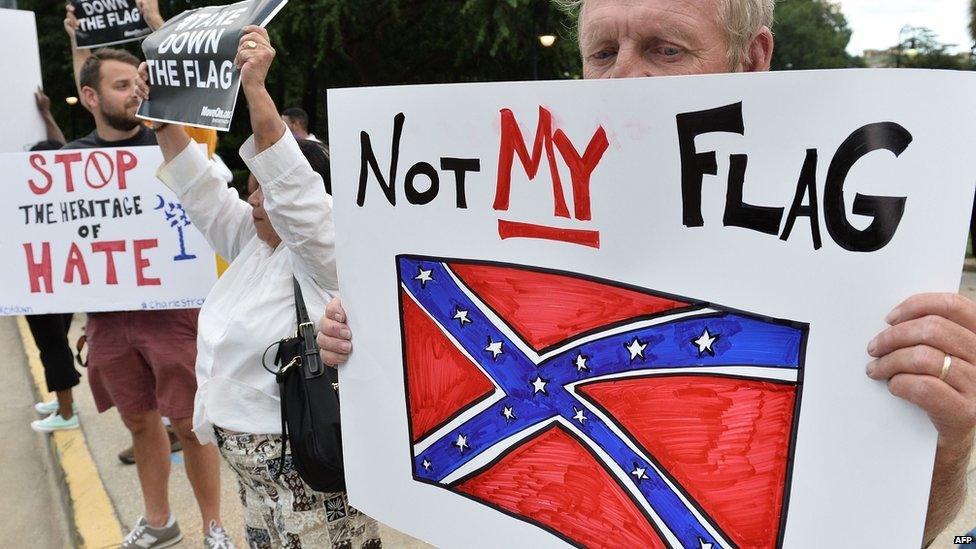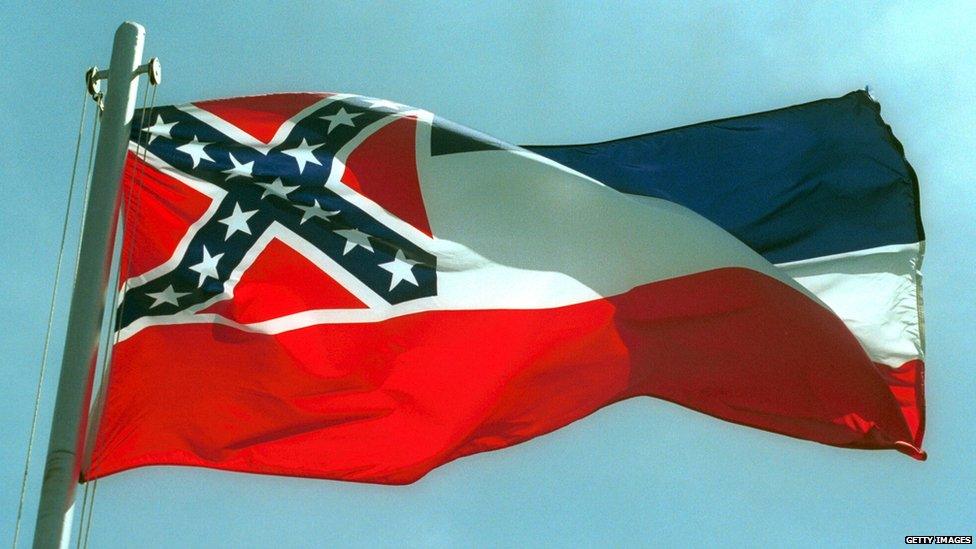Confederate flag: Bubba Watson to paint over Dukes of Hazzard car
- Published

The 1969 Dodge Charger, nicknamed the General Lee, appeared in the US TV show The Dukes of Hazzard
US golfer Bubba Watson is to paint over the Confederate flag on the car from the Dukes of Hazzard TV series, as part of a growing backlash against the rebel symbol from the US Civil War.
The top golfer, who owns the car, announced the move by tweeting, external that he believed "all men are created equal".
The flag divides opinion in the US, symbolising racism to its critics - and southern heritage to its defenders.
The debate was revived by a recent gun attack on a black church in Charleston.
The suspect behind the murder of nine churchgoers, Dylann Roof, appeared in many photos holding the flag.
The Confederate battle flag became a potent symbol for the southern states fighting the Civil War as they sought to break away from the union.
Many of those states now display the flag outside government buildings. It also appears on number-plates and is sold as a bumper sticker.

Protesters have rallied to have the flag taken down
But it remains controversial, seen by some as an icon of slavery and oppression, while others say it symbolises their history and identity. The Charleston attack has prompted fresh calls for displays of the flag to be curtailed.
Watson, the third-ranked golfer in the world and two-time Masters champion, said on Twitter that he would cover the flag on the car with the US Stars and Stripes.
"All men ARE created equal, I believe that so I will be painting the American flag over the roof of the General Lee," he said, referring to the vehicle by its nickname on the Dukes of Hazzard.
The car was a centrepiece of the US TV show from the late 1970s, which featured a group of rural Robin Hoods.
Watson acquired the car in 2012, according to the Washington Post.

Birth of a flag

The Confederate battle flag is part of Mississippi's state flag
seen today on houses, bumper stickers and T-shirts (and Mississippi flag, above)
sometimes accompanied by the words "If this shirt offends you, you need a history lesson"
but it was never the official national flag of the Confederacy, rejected in 1861
instead adopted as battle flag by the Army of Northern Virginia under General Lee
it fast became a potent symbol of Confederate nationalism, more popular than the official national flag
